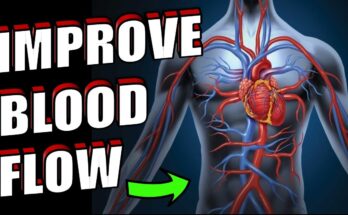Small Bowel Prolapse Symptoms: Small bowel prolapse, or enterocele, occurs when the small intestine descends into the lower pelvic cavity, pushing against the vaginal wall.
Early recognition of symptoms such as pelvic pressure and discomfort is crucial for timely treatment and to prevent complications, making awareness essential for effective management.
What is Small Bowel Prolapse (Enterocele)?
Small bowel prolapse, medically known as enterocele, occurs when the small intestine descends into the lower pelvic cavity, pushing at the top part of the vagina or the rectum. This condition typically arises due to a weakening of the pelvic floor muscles, often triggered by childbirth, heavy lifting, or significant weight gain. It can also be influenced by the aging process, as the pelvic muscles naturally weaken over time.
Differences Between Small Bowel Prolapse and Other Types of Pelvic Organ Prolapses
Small bowel prolapse (enterocele) differs significantly from other types of pelvic organ prolapses. Here are the main distinctions:
- Location: Unlike other prolapses that may involve the bladder (cystocele) or the rectum (rectocele), an enterocele specifically involves the herniation of the small intestine.
- Symptoms: While symptoms of pelvic organ prolapses can overlap, including pelvic pressure and discomfort, an enterocele often presents with a deep, aching pain that worsens at the end of the day or during physical activities.
- Cause: Enteroceles are particularly associated with hysterectomy surgeries where the support of the upper vagina is compromised, unlike cystoceles and rectoceles which are more directly associated with childbirth trauma.
Statistics and Demographics Affected
Enterocele predominantly affects women, especially those who are postmenopausal, indicating a strong link to hormonal changes and aging. Here are some key statistics:
- Age Factor: The prevalence of enterocele increases with age, particularly affecting women aged 50 and above.
- Surgical Impact: Up to 12% of women who have undergone a hysterectomy may develop an enterocele.
- Childbirth Connection: Women who have delivered children vaginally have a higher risk, with the risk increasing with the number of vaginal births.
- Physical Strain: Activities that put a strain on the pelvic floor, like heavy lifting, significantly contribute to the risk of developing an enterocele.
However, understanding these factors is crucial for early identification and management of small bowel prolapse, helping those affected to seek timely medical advice and appropriate treatment.
Causes of Small Bowel Prolapse
Understanding the causes is crucial for diagnosis and effective treatment. Below, we explore the main causes, lesser-known contributing factors, and how these lead to small bowel prolapse.
Main Causes of Small Bowel Prolapse
- Weakened Pelvic Muscles and Tissues: The most common cause of small bowel prolapse is the weakening of the muscles and connective tissues in the pelvic floor. This weakening can result from natural aging, childbirth, or surgical procedures that involve the pelvic area.
- Chronic Pressure on the Abdomen: Chronic pressure from coughing, obesity, or constipation can increase abdominal pressure, which may push the small intestine towards the pelvic region.
- Previous Pelvic Surgery: Surgeries like hysterectomy (removal of the uterus) can alter the support structure of the pelvic floor, making prolapse more likely.
- Pregnancy and Childbirth: The strain and stresses of pregnancy and vaginal childbirth can stretch and weaken pelvic muscles and tissues, increasing the risk of prolapse later in life.
Lesser-Known Contributing Factors
- Genetic Predisposition: Some individuals may have a genetic predisposition to connective tissue disorders, making them more susceptible to prolapses.
- Menopause: Decreased estrogen levels during menopause can weaken pelvic muscles and tissues, contributing to the development of prolapse.
- Heavy Lifting: Regularly lifting heavy objects can strain pelvic muscles and lead to prolapse.
- Neurological Conditions: Conditions that affect nerve function, such as multiple sclerosis or spinal injuries, can impair the strength and functionality of the pelvic floor.
How These Causes Lead to Small Bowel Prolapse
The small bowel prolapse occurs when the above factors lead to a weakening or disruption of the pelvic floor muscles. As these muscles and tissues lose their ability to support the pelvic organs effectively, the small intestine may begin to descend into the pelvic cavity. Over time, this can result in a bulge in the vaginal canal or a feeling of heaviness or discomfort in the pelvic area. The weakening of supportive structures combined with increased intra-abdominal pressure creates the perfect scenario for small bowel prolapse.
However, understanding these causes and factors can help in early diagnosis and treatment, which might include lifestyle changes, physical therapy focused on strengthening pelvic muscles, or surgical interventions to restore the anatomy and function of the pelvic floor.
Symptoms of Small Bowel Prolapse
Small bowel prolapse, also known as enterocele, is a condition where the small intestine descends into the lower pelvic cavity, causing a range of symptoms that can affect daily life. Understanding these symptoms can help in early diagnosis and treatment.
Primary Symptoms
The primary symptoms of small bowel prolapse are often noticeable and can significantly impact the quality of life. They include:
- Pelvic pressure or heaviness: This sensation is typically felt in the pelvic region and can worsen throughout the day or during physical activities.
- Lower back pain: Persistent or intermittent pain in the lower back is common as the prolapsed bowel exerts pressure in the pelvic area.
- A bulge in the vagina or rectum: In severe cases, part of the small intestine can protrude into the vagina or rectum, creating a noticeable bulge, which might be felt or seen.
Secondary Symptoms
Secondary symptoms of small bowel prolapse may develop as the condition progresses or due to complications associated with the prolapse. These include:
- Difficulty with bowel movements: Constipation or straining during bowel movements can occur as the prolapsed intestine affects the normal function of the digestive system.
- Urinary problems: Increased frequency, urgency, or incontinence may occur if the prolapse interferes with bladder function.
- Sensation of incomplete bowel evacuation: Individuals may feel as if they cannot completely empty their bowels.
Variation with Severity of the Prolapse
The symptoms of small bowel prolapse can vary significantly depending on the severity of the prolapse:
- Mild prolapse: Symptoms might be barely noticeable, often only feeling a slight heaviness or discomfort that comes and goes.
- Moderate prolapse: Increased discomfort with visible or more tangible signs such as a bulge in the vagina or rectum. Daily activities might become more challenging.
- Severe prolapse: Symptoms become constant and can severely impact the ability to perform routine tasks. Severe cases often result in significant back pain, pronounced bulging, and considerable urinary and bowel dysfunction.
However, if you experience any of these symptoms, consulting with a healthcare provider is recommended.
Diagnosing Small Bowel Prolapse
Early and accurate diagnosis is crucial for effective management and treatment. Here, we explore the common diagnostic procedures and the role of symptoms in early detection.
Common Diagnostic Procedures
- Physical Examination: The initial step in diagnosing small bowel prolapse often involves a thorough physical examination, including a pelvic exam. During this exam, a healthcare provider may ask the patient to strain or cough, which can make the prolapse more noticeable.
- Barium X-ray: Patients may undergo a series of X-rays after drinking a barium solution. Barium coats the lining of the small intestine, making the outline of the bowel visible on X-ray images. This test can help identify structural changes in the bowel and other abnormalities.
- Dynamic Magnetic Resonance Imaging (MRI): Dynamic MRI is used to provide a detailed image of the pelvic organs while they are in motion. This imaging test is particularly useful in showing the extent of the prolapse during activities that increase abdominal pressure, such as coughing.
- Defecography: This specialized X-ray test evaluates the rectal and intestinal function by observing the evacuation process. It helps in assessing how complete the rectum is emptied and whether any bowel prolapses into the vagina.
- Endoscopy: An endoscopy involves inserting a thin, flexible tube with a camera attached into the gastrointestinal tract. It allows the doctor to view the inside of the small intestine directly and assess any signs of prolapse or other issues.
The Role of Symptoms in Early Diagnosis
Symptoms play a pivotal role in the early diagnosis of small bowel prolapse. Often, the symptoms can be nonspecific and overlap with other conditions, which makes patient-reported symptoms critical for guiding further diagnostic testing. Common symptoms include:
- Pelvic or abdominal discomfort: Usually worsened by standing for long periods or by physical exertion.
- Sensation of heaviness or fullness: Patients may describe a feeling of something coming down or a bulge in the vagina that they can feel.
- Urinary problems: Such as stress incontinence, frequent infections, or a sense of incomplete bladder emptying.
- Defecatory dysfunction: Difficulty during bowel movements, a sense of incomplete evacuation, or constipation.
By understanding the common diagnostic procedures and recognizing the importance of symptoms, patients and healthcare providers can work together to diagnose small bowel prolapse effectively and improve the overall management of the condition.
Treatment Options for Small Bowel Prolapse
Here, we explore the treatment goals and the various nonsurgical and surgical options available for small bowel prolapse.
Treatment Goals
The primary objectives for treating small bowel prolapse include:
- Relieving Symptoms: The foremost goal is to alleviate the discomfort and symptoms associated with the prolapse, such as pelvic pressure, pain, and complications related to bowel movements.
- Restoring Function: Treatment aims to restore the normal position and function of the small bowel and pelvic organs.
- Preventing Recurrence: Ensuring the prolapse does not recur is a key objective, which involves strengthening the pelvic floor muscles.
- Improving Quality of Life: Ultimately, treatment should improve the individual’s ability to perform daily activities without pain or restriction.
Nonsurgical Treatments
For those with mild symptoms of small bowel prolapse, or for whom surgery is not an option, nonsurgical treatments can be very effective:
- Pelvic Floor Exercises: Strengthening the pelvic floor muscles through targeted exercises, often guided by a physical therapist, can help support the organs in the pelvis.
- Vaginal Pessary: A pessary is a device placed in the vagina to support the areas affected by the prolapse. Pessaries come in various shapes and sizes and must be fitted by a healthcare provider.
- Dietary Changes: Adjusting one’s diet to manage weight and prevent constipation can relieve the pressure on the pelvic floor.
- Lifestyle Modifications: Avoiding activities that strain the pelvic floor, such as heavy lifting, and maintaining a healthy weight can help manage and prevent symptoms.
Surgical Options
When nonsurgical treatments are not effective, or the prolapse is severe, surgery may be necessary to correct the prolapse and alleviate symptoms:
- Reconstructive Surgery: This approach aims to repair the prolapse and restore the anatomy of the vagina and surrounding organs to as close to normal as possible. Techniques often involve using the patient’s own tissues or synthetic materials to support pelvic organs.
- Obliterative Surgery: In more severe cases, or where reconstructive surgery is not advisable, obliterative surgery may be performed to narrow or close off part of the vagina to provide support for prolapsed organs. This option is generally for women who are not sexually active.
- Laparoscopic Surgery: A minimally invasive approach using small incisions and specialized instruments to correct the prolapse, often resulting in shorter recovery times and less postoperative discomfort.
However, each treatment plan should be tailored to the individual’s specific symptoms, overall health, and personal preferences, in consultation with a qualified healthcare provider.
Prevention and Management of Small Bowel Prolapse
Understanding how to prevent the condition from worsening and effectively managing symptoms is crucial. Here’s a comprehensive guide outlining preventative measures, beneficial lifestyle changes, and the importance of regular medical check-ups.
Preventative Measures to Avoid Worsening of Symptoms
- Maintain a Healthy Weight: Excess body weight can increase abdominal pressure, which in turn exacerbates small bowel prolapse. Maintaining a healthy weight through a balanced diet and regular exercise can help reduce this risk.
- Practice Proper Lifting Techniques: Avoid heavy lifting whenever possible. If you must lift, ensure to use your legs rather than your back to reduce strain on your abdominal muscles.
- Pelvic Floor Exercises: Strengthening your pelvic floor muscles through exercises such as Kegels can support the organs in your pelvis, preventing them from prolapsing.
- Avoid Straining During Bowel Movements: Constipation can lead to straining, which can further weaken pelvic floor muscles. Keeping hydrated and consuming a high-fiber diet can help maintain regular bowel movements and reduce straining.
Lifestyle Changes that Can Help Manage Symptoms
- Dietary Adjustments: Incorporate fiber-rich foods like fruits, vegetables, and whole grains to ease constipation, a common trigger for small bowel prolapse symptoms. Avoiding spicy and acidic foods can also help manage discomfort.
- Regular Physical Activity: Engaging in regular, low-impact exercises such as walking, swimming, or cycling can improve overall physical health and help in maintaining a proper weight, reducing the pressure on the pelvic floor.
- Quit Smoking: Smoking can impair tissue health and lead to coughing spells that exacerbate prolapse symptoms. Quitting smoking is not only good for your respiratory and cardiovascular health but also beneficial for your pelvic organs.
- Manage Chronic Coughing: If you have a persistent cough, seek treatment. Chronic coughing can increase the severity of prolapse symptoms by putting repeated pressure on the pelvic floor.
Importance of Regular Medical Check-Ups
- Early Detection: Regular check-ups can help detect small bowel prolapse in its early stages, potentially simplifying treatment and management.
- Tailored Treatment Plans: A healthcare provider can offer treatments and suggest lifestyle adjustments specific to your condition and its severity.
- Monitor Progress: Ongoing medical assessments allow for the monitoring of the prolapse and the effectiveness of the implemented management strategies. This ensures adjustments can be made to treatments as needed.
Implementing these preventive measures and lifestyle changes, along with regular medical check-ups, can significantly help in managing small bowel prolapse, promoting a better quality of life and health stability.
FAQs about Small Bowel Prolapse Symptoms
What is small bowel prolapse?
Small bowel prolapse, also known as enterocoele, occurs when the small intestine descends into the lower pelvic area, causing various symptoms. This condition can affect anyone but is more prevalent in women with pelvic floor disorders.
What are the common symptoms of small bowel prolapse?
Symptoms of small bowel prolapse may include pelvic pain, a feeling of heaviness or fullness in the pelvic area, lower back pain, and noticeable bulging in the vagina or rectum. Some individuals may also experience urinary problems or constipation.
How do I know if I have small bowel prolapse?
If you experience any of the symptoms mentioned, it’s crucial to consult a healthcare provider. Diagnosis typically involves a physical examination and may include imaging tests like an MRI or ultrasound to assess the extent of the prolapse.
Can small bowel prolapse lead to complications?
Yes, if left untreated, small bowel prolapse can lead to complications such as chronic pelvic pain, increased risk of infections, and bowel obstruction. It is important to seek treatment to prevent worsening of symptoms and quality of life.
What treatments are available for small bowel prolapse?
Treatment options for small bowel prolapse vary depending on the severity of the condition and may include lifestyle changes, pelvic floor therapy, or surgery. Lifestyle changes can involve dietary modifications and exercises to strengthen the pelvic floor muscles, while severe cases might require surgical intervention.
Is small bowel prolapse preventable?
While not all cases are preventable, maintaining a healthy weight, practicing pelvic floor exercises, and treating constipation can help reduce the risk of developing small bowel prolapse.
Conclusion
In conclusion, understanding the symptoms of small bowel prolapse is crucial for early detection and effective management of this condition. Common indicators such as abdominal discomfort, bloating, and unusual bowel movements should not be overlooked.
If you suspect you might be experiencing symptoms of small bowel prolapse, it is essential to consult healthcare professionals promptly. Seeking timely medical advice can lead to an accurate diagnosis and appropriate treatment, significantly improving the quality of life.
Remember, addressing this condition early can make a substantial difference in treatment outcomes.
References
For further reading and to validate the information provided on small bowel prolapse symptoms, consider the following reputable sources:
- Mayo Clinic – A comprehensive overview of small bowel prolapse, including symptoms, causes, and treatment options. Read more at Mayo Clinic.
- WebMD – Provides detailed information on the diagnosis and management of small bowel prolapse. Explore more on WebMD.
- MedlinePlus – A resource by the U.S. National Library of Medicine offering insights into the symptoms and treatment of small bowel prolapse. Visit MedlinePlus.
- Healthline – Discusses lifestyle changes and surgical options for effectively managing small bowel prolapse. Learn more at Healthline.
These resources provide reliable information that can help patients and healthcare providers better understand and manage small bowel prolapse symptoms.



